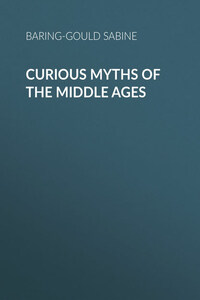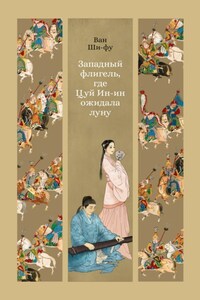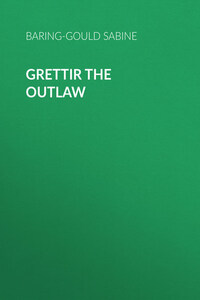WHO, that has looked on Gustave Doré’s marvellous illustrations to this wild legend, can forget the impression they made upon his imagination?
I do not refer to the first illustration as striking, where the Jewish shoemaker is refusing to suffer the cross-laden Savior to rest a moment on his door-step, and is receiving with scornful lip the judgment to wander restless till the Second Coming of that same Redeemer. But I refer rather to the second, which represents the Jew, after the lapse of ages, bowed beneath the burden of the curse, worn with unrelieved toil, wearied with ceaseless travelling, trudging onward at the last lights of evening, when a rayless night of unabating rain is creeping on, along a sloppy path between dripping bushes; and suddenly he comes over against a wayside crucifix, on which the white glare of departing daylight falls, to throw it into ghastly relief against the pitch-black rain-clouds. For a moment we see the working of the miserable shoemaker’s mind. We feel that he is recalling the tragedy of the first Good Friday, and his head hangs heavier on his breast, as he recalls the part he had taken in that awful catastrophe.
Or, is that other illustration more remarkable, where the wanderer is amongst the Alps, at the brink of a hideous chasm; and seeing in the contorted pine-branches the ever-haunting scene of the Via Dolorosa, he is lured to cast himself into that black gulf in quest of rest, – when an angel flashes out of the gloom with the sword of flame turning every way, keeping him back from what would be to him a Paradise indeed, the repose of Death?
Or, that last scene, when the trumpet sounds and earth is shivering to its foundations, the fire is bubbling forth through the rents in its surface, and the dead are coming together flesh to flesh, and bone to bone, and muscle to muscle – then the weary man sits down and casts off his shoes! Strange sights are around him, he sees them not; strange sounds assail his ears, he hears but one – the trumpet-note which gives the signal for him to stay his wanderings and rest his weary feet.
I can linger over those noble woodcuts, and learn from them something new each time that I study them; they are picture-poems full of latent depths of thought. And now let us to the history of this most thrilling of all mediæval myths, if a myth.
If a myth, I say, for who can say for certain that it is not true? “Verily I say unto you, There be some standing here, which shall not taste of death till they see the Son of Man coming in His kingdom,”1 are our Lord’s words, which I can hardly think apply to the destruction of Jerusalem, as commentators explain it to escape the difficulty. That some should live to see Jerusalem destroyed was not very surprising, and hardly needed the emphatic Verily which Christ only used when speaking something of peculiarly solemn or mysterious import.
Besides, St. Luke’s account manifestly refers the coming in the kingdom to the Judgment, for the saying stands as follows: “Whosoever shall be ashamed of Me, and of My words, of him shall the Son of Man be ashamed, when He shall come in His own glory, and in His Father’s, and of the holy angels. But I tell you of a truth, there be some standing here, which shall not taste of death till they see the kingdom of God.”2
There can, I think, be no doubt in the mind of an unprejudiced person that the words of our Lord do imply that some one or more of those then living should not die till He came again. I do not mean to insist on the literal signification, but I plead that there is no improbability in our Lord’s words being fulfilled to the letter. That the circumstance is unrecorded in the Gospels is no evidence that it did not take place, for we are expressly told, “Many other signs truly did Jesus in the presence of His disciples, which are not written in this book;”3 and again, “There are also many other things which Jesus did, the which, if they should be written every one, I suppose that even the world itself could not contain the books that should be written.”4
We may remember also the mysterious witnesses who are to appear in the last eventful days of the world’s history and bear testimony to the Gospel truth before the antichristian world. One of these has been often conjectured to be St. John the Evangelist, of whom Christ said to Peter, “If I will that he tarry till I come, what is that to thee?”
The historical evidence on which the tale rests is, however, too slender for us to admit for it more than the barest claim to be more than myth. The names and the circumstances connected with the Jew and his doom vary in every account, and the only point upon which all coincide is, that such an individual exists in an undying condition, wandering over the face of the earth, seeking rest and finding none.
The earliest extant mention of the Wandering Jew is to be found in the book of the chronicles of the Abbey of St. Albans, which was copied and continued by Matthew Paris. He records that in the year 1228, “a certain Archbishop of Armenia the Greater came on a pilgrimage to England to see the relics of the saints, and visit the sacred places in the kingdom, as he had done in others; he also produced letters of recommendation from his Holiness the Pope, to the religious and the prelates of the churches, in which they were enjoined to receive and entertain him with due reverence and honor. On his arrival, he came to St. Albans, where he was received with all respect by the abbot and the monks; and at this place, being fatigued with his journey, he remained some days to rest himself and his followers, and a conversation took place between him and the inhabitants of the convent, by means of their interpreters, during which he made many inquiries relating to the religion and religious observances of this country, and told many strange things concerning the countries of the East. In the course of conversation he was asked whether he had ever seen or heard any thing of Joseph, a man of whom there was much talk in the world, who, when our Lord suffered, was present and spoke to Him, and who is still alive, in evidence of the Christian faith; in reply to which, a knight in his retinue, who was his interpreter, replied, speaking in French, ‘My lord well knows that man, and a little before he took his way to the western countries, the said Joseph ate at the table of my lord the Archbishop of Armenia, and he has often seen and conversed with him.’









